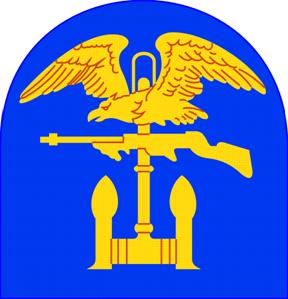2nd Engineer Special Brigade
| Engineer special brigade | |
|---|---|

Engineer special brigade shoulder sleeve insignia
|
|
| Active | 1942–46 |
| Country | United States |
| Branch | Army |
| Motto(s) | "Put 'Em Across" |
Engineer special brigades were amphibious forces of the United States Army developed during World War II. Initially designated engineer amphibian brigades, the first four brigades were redesignated ESBs in 1943.
At the onset of direct American involvement in World War II, it was obvious that the U.S. military would need a large strategic and tactical amphibious capability. In 1941, the United States' amphibious forces were divided into two corps: one Atlantic; one Pacific. Both amphibious corps were combined Army and Marine Corps commands, administered by the U.S. Navy. The Atlantic Corps consisted of the 1st Infantry Division and the 1st Marine Division, and the Pacific Corps consisted of the 3rd Infantry Division and the 2nd Marine Division. As this set-up quickly proved itself unwieldy, the Joint Staff surprisingly appointed the U.S. Army, and not the Marine Corps, to develop doctrine for sustained amphibious operations. On 20 May 1942, the Army activated its Amphibious Training Command at Camp Edwards, Massachusetts. Subsequently, the Army also activated the Engineer Amphibian Command.
Initially, the Amphibious Training Command (later, Amphibious Training Center) was tasked to train no fewer than 12 Army divisions (including 1 armored division) in amphibious operations. As the war progressed, the Marine Corps expanded to six divisions and the Army and the Navy began to fight over the procurement and assignment of landing craft and other amphibious assault equipment, resulting in the Army's decision to ultimately close the Amphibious Training Center. Per its agreement with the Navy, the Army continued to train Engineer Amphibian Brigades, for while the Marine Corps was adept at the initial waves of amphibious assaults, the Marine Corps had yet to create an effective doctrine concerning subsequent support waves. This task fell to the EABs.
...
Wikipedia
